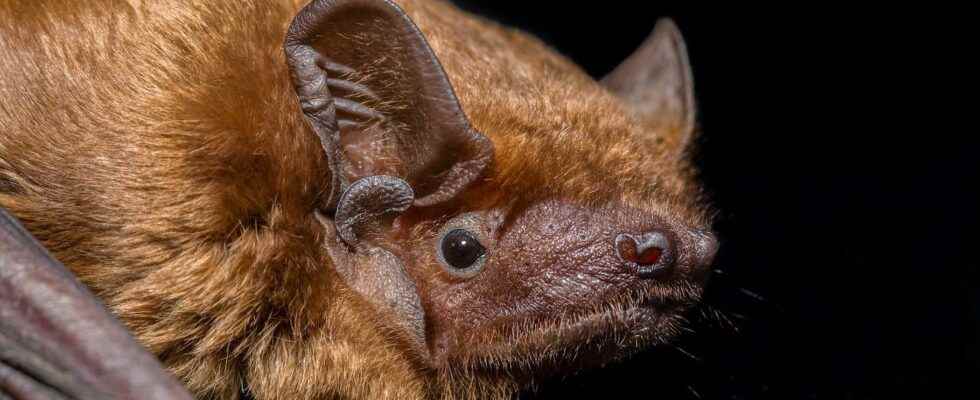Produceenergy thanks to wind turbines, it limits the emissions of greenhouse gas. But is it really so ” green “ only that ? Researchers keep asking the question. In Germany, in particular, where many wind turbines have recently been installed. And where the counts seem to show that each year, about ten bats die for each wind turbine in operation.
A dozen bats, it is not much, one could oppose. Certainly. But multiplied by the ever-increasing number of wind turbines installed – some 30,000 for the time being – it starts to count. Especially today researchers from Leibniz Institute for Zoo and Wildlife Research (Germany) argue that the disappearance of these bats has potentially significant consequences for the rest of the biodiversity.
Wind turbines shut down
To reach this conclusion, the researchers studied the stomach contents of noctule specimens – Nyctalus noctulaa bat big-eared – killed by wind turbines. Gold 20% of species ofinsects – like the weevil chestnut – that the hunters had eaten shortly before are considered harmful to theagriculture and forestry. Scientists conclude that the loss of bats disrupts food chains existing. So as to potentially increase the number of pests. And even make you want to resort to chemical control.
“Further scientific work is neededconcedes Christian Voigt, head of the Evolutionary Ecology department at the Leibniz Institute for Zoo and Wildlife Researchin a communicated. In the meantime, to preserve bats and their functional role in their habitats, we are asking for a mandatory shutdown of wind turbines during periods of high activity of these small mammals. » This is already the case for the most recently installed wind turbines. But 75% of the fleet is still running continuously.
Green energy: wind power does not protect biodiversity
Wind power is part of the production of renewable energy and as such contributes to the protection of the environment. Really ? Wind turbines are the cause of the death of many birds and bats every year, and the recent death of six golden eagles in the United States is causing debate.
Article by Bruno Scala published on 08/17/2011
For a long time, the wind turbines are accused of being harmful to birds and bats, which collide with the gigantic blades whose length can now reach 70 meters.
Numerous counting campaigns, in Canada, France and Belgium in particular, have made it possible to decide on the gravity of the problem (the Bird Protection League had estimated between 0 and 60 the number of victims per wind turbine and per year). The conclusion is clear: thewind powersupposed to contribute to the Environmental Protection, gate in reality undermines the maintenance of biodiversity. Bad news for this booming industry.
For the supporters of wind power, who do not seem to dispute the figures, the problem is not that serious: the number ofbirds killed by wind turbines is much less important than that of birds victimized by towers radioskyscrapers, carslines to high tension, etc. But that these buildings humans do not pride themselves on wanting to protect the environment…
The wind power has lead in the wing
In the United States, the second largest producer ofwind power behind China, thanks to a production capacity of 40,200 MW, the situation is serious. For the first time, a federal agency – theU.S. Fish and Wildlife Service (FWS) – will investigate the impact of wind turbines on bird populations.
Indeed, the United States is not spared by this problem. According to theAmerican Bird Conservancyan organization of defense of birdsevery megawatt of wind power kills 14 birds per year, for a total of approximately 440,000 victims each year.
This past year, six golden eagles fell victim to the huge wind turbines of the Pine Tree Park, which line the floor of the desert of Mojane, a hundred kilometers from Los Angeles in California. And in the United States, golden eagles are protected by two laws (protective acts).
The case could well thwart the plans of the American megalopolis which had set the rate of electricity supply through wind energy at 35% by 2020. According to Jerome Ford, director of the program on the migration of birds at the FWS, the goal is to find a way to produce renewable energy while respecting the biodiversity and more particularly the one that is in danger. Placing wind farms out of migration flows is one solution, but environmentalists say it could lead to a habitat fragmentationwhich is also harmful for the animal populations concerned.
Bats also under threat
Moreover, birds are not the only victims of wind turbines. The bats also suffer from this green energy. If it is easier for bats to avoid the blades, since they navigate through theecholocationand can therefore locate the blades at night (unlike birds), it is on the other hand impossible for them to anticipate the strong differences in pressure caused by the passage of the blades, the ends of which spin at gears close to 300 km/h. This pressure difference causes tissue damage, symptomatic of what is called a barotrauma.
A 2008 study, published in the journal Current Biologyhighlighted the nuisance wind turbines on bats. All individuals whose lungs had been examined showed lesions, suggesting that the bats had suffered a barotrauma. Dark episode for green energies.
Only a few days left to take advantage of our special offer for Father’s Day!
Your father is a great science enthusiast and unusual discoveries? And if you offer him a superb scientific exploration in paper format? Benefit from -20% on the Mag Futura (special offer: €15 instead of 19 €): 220 pages, 4 key issues deciphered to understand everything about the science that will mark 2022.
Special offer: -20% reduction on the Mag Futura
Mag Futura is:
- 4 major scientific questions for 2022, from the Earth to the Moon
- 220 pages, 60 experts
- Home delivery
- Electronic gift card
Interested in what you just read?
